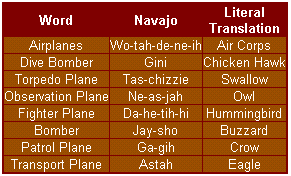
Dimdima
Online Children's Magazine from India

Dimdima
Online Children's Magazine from India

Welcome back to the deserts of Arizona, where we are getting ready to begin our summer vacation. Traditionally, American schools close for the summer during the last week of May. This is also the time of the year when Americans observe Memorial Day. Celebrated during the last Monday in May, Americans honor their war heroes during this holiday. In keeping with the spirit of the season, let me tell you an amazing story about some little known heroes known as the Navajo Code talkers, who helped America outwit the Japanese troops during World War II.
The Navajo Indians are a tribe of people who hail from the American Southwest. Their mother tongue is an extremely complex language that has varied syntactic and tonal subtleties. Depending on the tone and pitch, the same word could mean different things in this language. Before World War II, the Navajo tongue did not have a written alphabet. Only Navajo tribesmen, and some select few “outsiders” with extensive exposure to the language and culture of the Navajo people, could speak it fluently.
Philip Johnston was one among the few non-natives to speak the Navajo language. Being a veteran soldier who had served America during World War I, he knew that the US army was frantically trying to develop some coded means of communication amongst US troops that would prove undecipherable for the clever Japanese. Since he knew of the complexities of the Navajo language, he was convinced that it could be the answer to the US army’s quest. In 1942, Johnston met with Major General Clayton B. Vogel, the commanding general of Amphibious Corps, Pacific Fleet, and put forth his theory that the Navajo language be considered a starting point in the development of a new code. With the help of some Navajo tribesmen, Johnston demonstrated the veracity of his theory to the general and his staff. The Navajo tribesmen could encode, transmit and decode English messages in a matter of seconds.
General Vogel and his staff members were very excited and hopeful with the results of the primary tests. Soon some 200 Navajo men were recruited by the US Marine Corps. The first 29 “code talkers” completed basic training known as boot camp in May 1942. They then began to work on developing the code. These men had their work cut out for them. They had to first of all learn all the technical terms commonly used by the Marine Corps and come up with suitable words to describe them in the Navajo language. They also had to put together an alphabet so they could write in their mother tongue. The code talkers had to then memorize the alphabet and all the new words they had learned. During combat, the code talkers were in charge of encoding, transmitting and decoding sensitive data including military manoeuvers and the locations of troops. Their methods were so ingenious that to everyone other than the code talkers themselves, their radio and telephonic conversations seemed nonsensical. The Japanese intelligence officers were unable to crack the tough code built by the Navajo braves.
Between 1942 and 1945, the Navajo code talkers were an integral part of every US Marine Corps mission conducted in the Pacific region. Even after routing the Japanese troops, the efforts and accomplishments of the code talkers were kept under wraps by the American government for a very long time. This was because the US Marines used the services of the code talkers even after the war ended. They did not want to publicize the contribution of the Navajo people to the general public, because they feared that cryptologists would then be able to crack the code. It was only in July 2001, that the government honored the “original 29” by awarding them the Congressional Medal of Honor, in Washington D.C.
Dimdima is the Sanskrit word for ‘drumbeat’. In olden days, victory in battle was heralded by the beat of drums or any important news to be conveyed to the people used to be accompanied with drumbeats.
Bharatiya Vidya Bhavan
K. M Munshi Marg,
Chowpatty, Mumbai - 400 007
email : editor@dimdima.com
Bharatiya Vidya Bhavan
505, Sane Guruji Marg,
Tardeo, Mumbai - 400 034
email : promo@dimdima.com
Dimdima.com, the Children's Website of Bharatiya Vidya Bhavan launched in 2000 and came out with a Printed version of Dimdima Magazine in 2004. At present the Printed Version have more than 35,000 subscribers from India and Abroad.